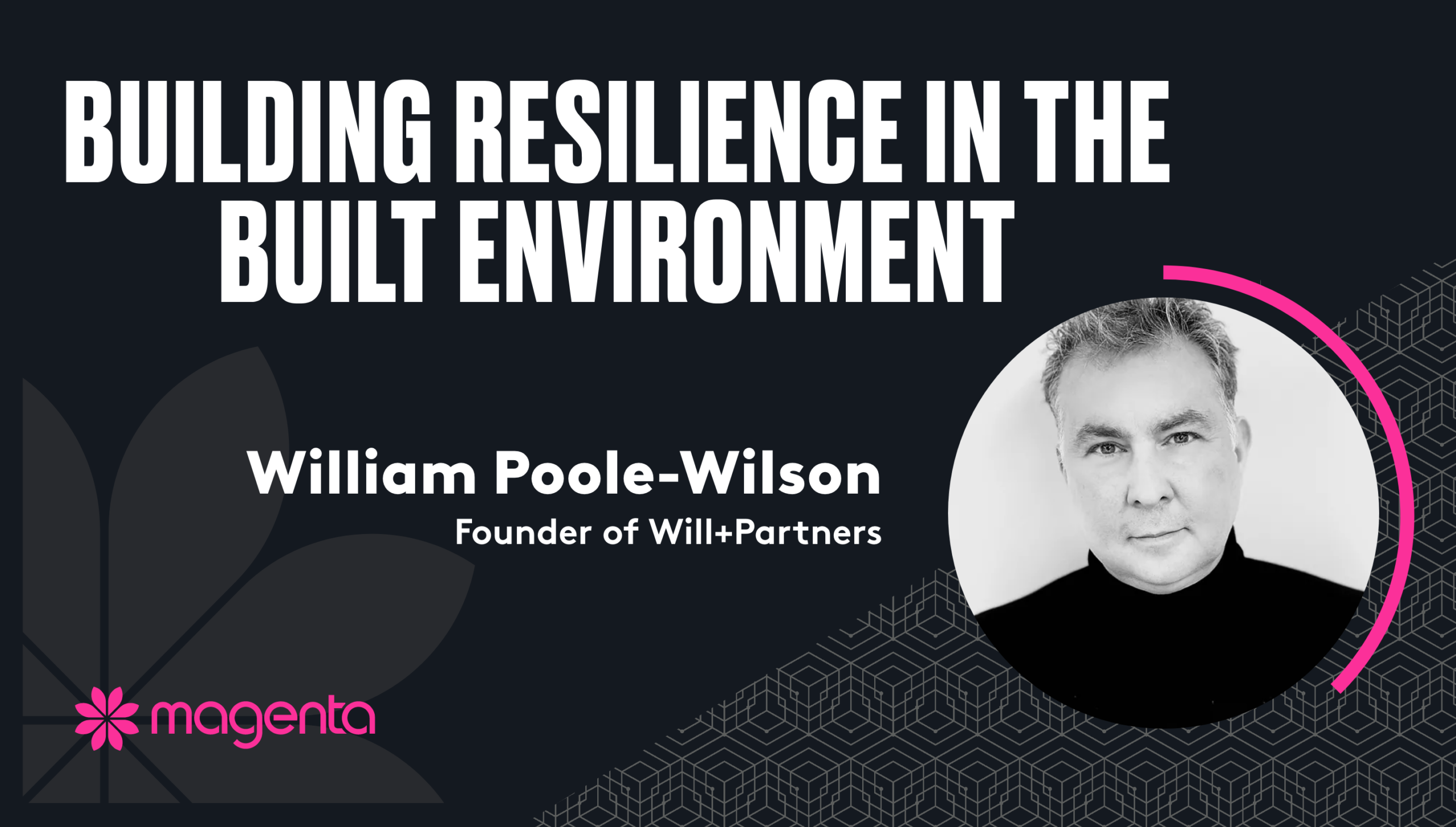As our building resilience campaign comes to a close, we held our final Q&A with William Poole-Wilson, the founder of workplace design and strategy architects firm WILL+Partners. William discusses how the business of the workplace and wellness suffered in the 2008 recession and why it should remain a priority in the current economic turmoil.
Tell us what happened to architecture and design in 2008?
It was a challenging time with shared concerns. Fortunately, we managed to win a lot of work that helped us out of that period. One of our fears was that projects would simply become a matter of finance at the expense of important considerations such as sustainability and wellness. While these were not as big a topic in 2008 as they are today, architects and engineers were certainly talking about them back then. The good news is that genuine strategies around ESG have started to shine through since 2008, with developers, designers and landlords now on the same page.
Do you think the current economic situation could curb or accelerate progress in environmental sustainability?
We could see progress curbed at the middle and lower end of the office market, simply because the diversity of available office space isn’t there right now. This would not be a good step. People working in smaller businesses still need good spaces that encourage productivity, support wellbeing, and align with their positive cultures and community spirits. It’s important to be mindful that some businesses cannot afford to develop the sorts of co-working spaces that are becoming fashionable.
The top companies lead the way and tell us what is possible, but there is a danger of a divide being created if this doesn’t trickle down properly, and we need to think about what we give back to smaller businesses to help them work in these new ways. We must appreciate that sustainability should respect choice. If companies do not move in that direction because they cannot afford it, we should not be critical of that.
The current economic climate may also undermine progress in sustainability if funding avenues are closed off. ESG is a highly specialised subject that demands deep rooted knowledge to understand all the various intricacies – there is no such thing as a silver bullet when it comes to sustainability and building design. At the moment, it feels like the success of ESG hinges on the good nature of people willing to spend a fortune and invest enormous amounts of effort along the way.
How can business leaders boost productivity? And what role does the workplace play here?
This is a big question. Unfortunately, nobody seems to have found the answer yet. I think we need to start with how we define what productivity is and how we measure it – different countries in different parts of the world have different approaches, and there is always some kind of data or survey out there that suits a particular narrative. It would also be beneficial to think about other metrics such as efficiency, wellness, health and presenteeism, as these are all potentially supporting components of productivity. The workplace has a big role to play. Presenteeism appears to be dropping quite significantly in workplaces at the moment because more people are at home. We need to understand the impact this is having and why people are choosing to stay at home more.
How can occupiers be smart with space? What do you think means for the future of workplace design?
In terms of office design, my advice is to focus on getting the two basics right – quiet workspaces, and collaborative workspaces. We need to be more diverse in our approaches, taking into account the different needs of different people. Further, we also need to incorporate flexibility in spaces so that they may be rearranged to suit varying use cases at different times.
Stimulating the social senses is another important consideration. Offices are where strong relationships and lasting trust are built, and business leaders need spaces where their teams can grow and thrive together. This will help to improve productivity and performance.
Do you agree that urban mining is the untapped market of the future? What do you think needs to happen to drive this forward?
It is one to watch. There are already several promising examples of early adopters of truly recycled offices, especially in the UK and Europe. There are some practical challenges that need to be considered. In terms of design consulting, I don’t see urban mining leading to reduced costs. If anything, the requirement may result in higher consultancy fees due to the greater amount of thinking required. The cost of construction could come down, however.
Urban mining also relies on banks of recycled materials and goods. And while we need to encourage the re-use of things as much as we can, we must also recognise that there is a land and space requirement for these facilities. We must also consider different layers of recycling, and not be afraid of redundancy. Let’s be creative and see if the materials, products and fabrics extracted from a redundant building can be used for something entirely different.
What lessons did we learn back in 2008 that we can apply to 2023?
The number one lesson, for me, is to adopt a mindset that pushes your business to thrive. Don’t just try and survive. This means making sure your company reflects and actively pursues your clients’ needs. While finding efficiencies and developing better processes is important, the best place to start is focusing on what your clients want. Identify where you have value and maximise that.
Check out our previous participants in the series here:








